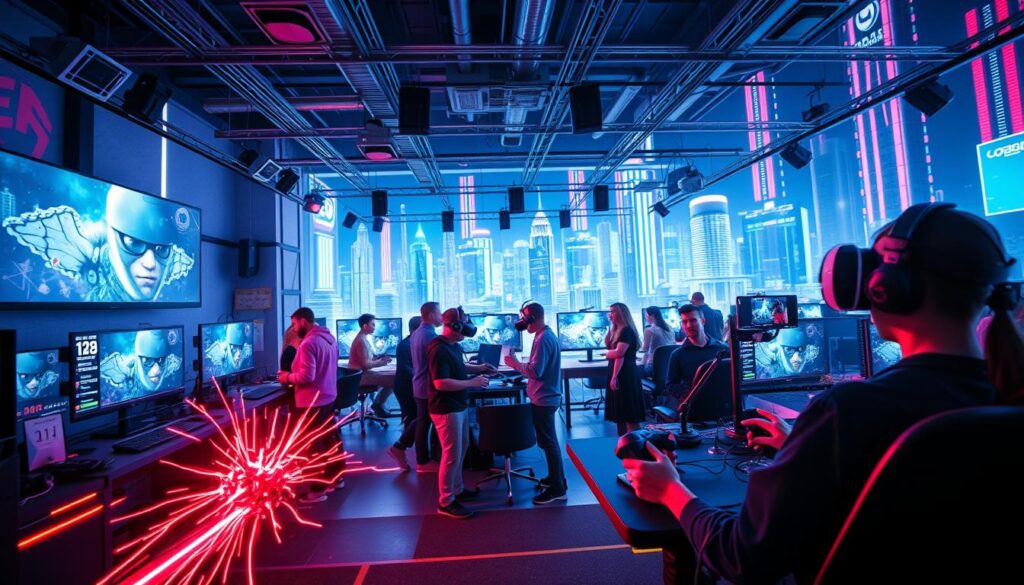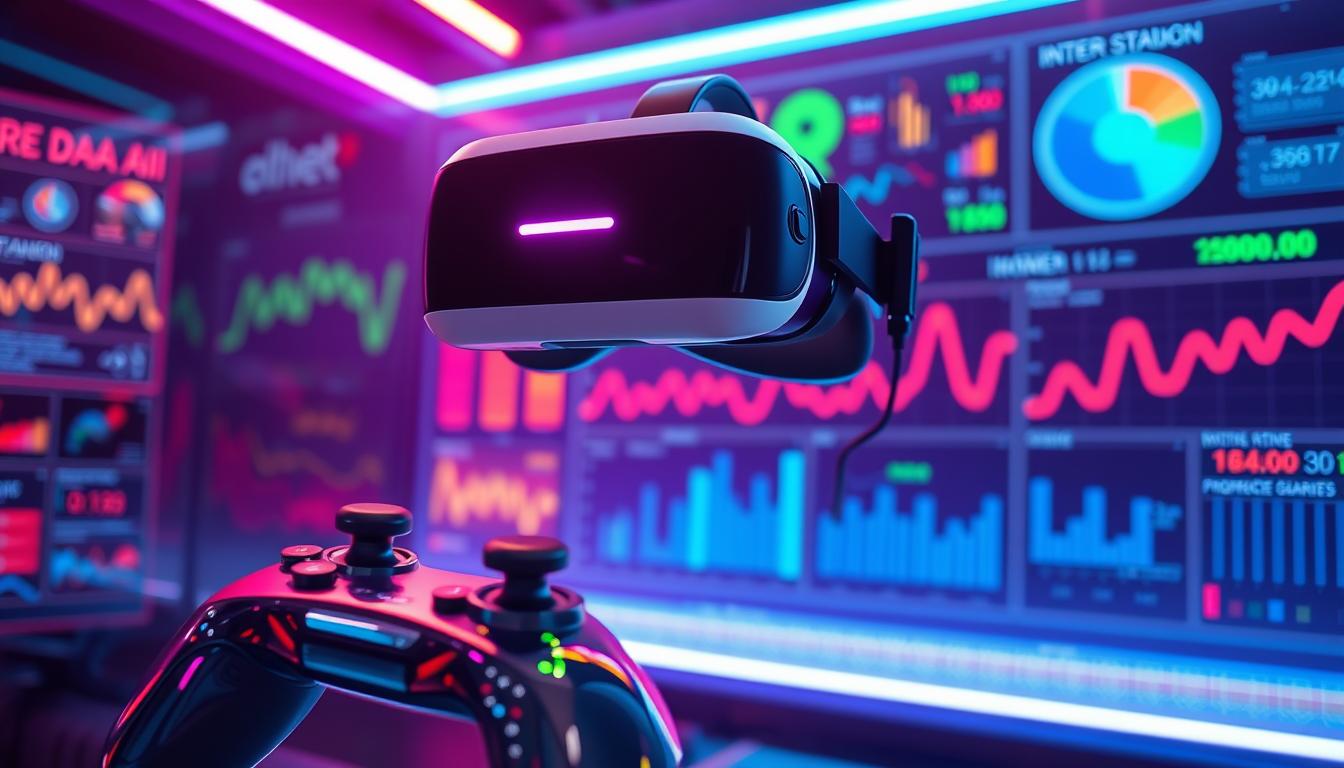Did you know that VR speedrunning has become one of the fastest-growing trends in the gaming community? With events like the GDQ VR run in Half-Life: Alyx, players are pushing the boundaries of what’s possible in immersive environments. This unique approach combines precision, creativity, and technical skill, making it a thrilling challenge for enthusiasts.
Unlike traditional methods, VR speedrunning requires a blend of physical movement and strategic thinking. Platforms like VRSpeed.run and Discord communities have become essential hubs for sharing strategies and connecting with fellow runners. Whether you’re a beginner or an experienced player, this guide will provide practical tips and gear recommendations to help you improve your performance.
In the following sections, we’ll explore advanced tactics, community resources, and expert advice to elevate your skills. Ready to take your VR experience to the next level? Let’s dive in!
Key Takeaways
- VR speedrunning is a rapidly growing trend in the gaming community.
- It combines physical movement and strategic thinking for a unique challenge.
- Platforms like VRSpeed.run and Discord are essential for sharing strategies.
- This guide offers practical tips and gear recommendations for all skill levels.
- Advanced tactics and expert advice will help you improve your performance.
Essential Gear and Setup for VR Speedrunning
Your success in VR speedrunning hinges on proper equipment and calibration. The right gear not only enhances your performance but also ensures a seamless experience. From headsets to controllers, every component plays a crucial role in your journey to mastering this unique challenge.
Choosing the Right VR Equipment
Selecting the best hardware is the first step towards optimising your performance. Here’s what to consider:
- Headsets: Look for models with high refresh rates and low latency. Popular choices include the Valve Index and Oculus Quest 2.
- Controllers: Precision is key. Ensure your controllers are ergonomic and responsive.
- Tracking Systems: External sensors or inside-out tracking can make a significant difference in accuracy.
Leading runners often recommend balancing performance with comfort. A lightweight headset can reduce fatigue during long sessions.
Calibrating Your Setup for Optimal Performance
Proper calibration ensures your movements are tracked accurately, minimising lag and errors. Follow these steps:
- Adjust Play Area: Clear enough space for movement and ensure your sensors cover the entire area.
- Fine-Tune Settings: Use software tools to adjust height, floor level, and controller sensitivity.
- Test and Iterate: Run a few practice sessions to identify and fix any tracking issues.
Updating drivers and software is also crucial. Outdated versions can lead to performance hiccups, disrupting your flow.
By investing time in calibration, you’ll create a setup that supports your goals and enhances your overall experience.
Advanced Strategies for speedrun in VR games

Mastering advanced techniques can significantly elevate your performance in immersive environments. Whether you’re aiming to shave seconds off your time or discover new ways to bypass obstacles, these strategies will help you refine your approach. Let’s explore the key elements that can make a difference in your runs.
Understanding In-Game Glitches and Exploits
In-game glitches are often the secret weapon of top runners. These unintended mechanics can help you skip sections or gain advantages. For example, during a GDQ VR run of *Half-Life: Alyx*, runners used specific glitches to bypass locked doors and reduce their overall time.
To identify these glitches, study community forums and watch replays of successful runs. Experiment with movement and interactions to discover new possibilities. Remember, mastering these techniques requires patience and practice.
The Role of Real-World Movement in VR Speedrunning
Your physical movements directly impact your in-game performance. Synchronising your actions with the game’s mechanics is crucial. For instance, precise hand movements can help you interact with objects faster, while efficient footwork ensures smoother navigation.
Practise in a clear play area to avoid obstacles. Focus on minimising unnecessary movements to save time. Small adjustments, like optimising your turning radius, can lead to significant improvements.
Optimising Routes and Split Timing
Route optimisation is about finding the fastest path through a level. Analyse each section to identify shortcuts and avoid dead ends. Tools like speedrunning guides can provide valuable insights into efficient routes.
Split timing allows you to track your progress in real-time. Divide your run into segments and set goals for each one. This approach helps you identify areas for improvement and maintain a consistent pace.
By combining these strategies, you’ll not only improve your times but also deepen your understanding of the game. Continuous learning and adaptation are the hallmarks of a successful runner.
Insights from the VR Speedrunning Community

The VR speedrunning community thrives on collaboration and shared knowledge. It’s a space where users from around the world come together to push the boundaries of what’s possible. Whether you’re a seasoned runner or just starting, the community offers invaluable resources to help you improve.
Learning from Leaderboards, Forums, and Live Splits
Leaderboards and live splits are essential tools for tracking progress. They provide real-time data on your performance, allowing you to identify areas for improvement. Platforms like VRSpeed.run offer transparent leaderboards, making it easy to compare your times with others.
Community forums are another treasure trove of information. Here, users share tips, troubleshoot issues, and discuss innovative techniques. For example, a recent post on a popular forum revealed a new glitch that shaved seconds off a popular run.
Discord bots are also widely used for instant updates on world records. These tools keep the community engaged and informed, fostering a culture of continuous learning.
| Resource | Benefits |
|---|---|
| Leaderboards | Track progress and compare times |
| Forums | Share tips and troubleshoot issues |
| Live Splits | Monitor real-time performance |
| Discord Bots | Receive instant updates on records |
Real-life events also play a significant role in fostering a supportive culture. These gatherings allow runners to connect, share strategies, and learn from each other. As one person put it, “The community is the thing that keeps me motivated.”
To stay updated with the latest strategies, consider joining community channels. Engaging with others can help refine your techniques and keep you inspired. Remember, every user contributes valuable insights, whether through posts or direct engagement.
For a deeper understanding of how speedrunning can enhance your skills, explore the parallels between close reading in literature and speedrunning. Both practices involve a deep engagement with their respective texts, uncovering hidden potentials and navigating boundaries.
In summary, the VR speedrunning community is a vibrant and collaborative space. By leveraging leaderboards, forums, and live splits, you can continuously improve and stay connected with fellow enthusiasts.
Conclusion
Improving your performance in immersive challenges requires a blend of strategy and precision. Start by ensuring your gear is set up correctly, as a well-calibrated system can make all the difference. Explore advanced techniques like glitch discovery and route optimisation to shave precious seconds off your time.
Community insights are invaluable. Platforms like VRSpeed.run and Discord offer a wealth of knowledge, from leaderboards to live splits. Learning from experienced runners can provide shortcuts and new perspectives.
Consistent practice is key. Small adjustments in your movements and techniques can lead to significant improvements over time. Every thing counts, from refining your turning radius to mastering split timing.
Ready to take your skills to the next level? Join the community, test these strategies, and share your progress. By following these trusted tips, you can set new records and redefine what’s possible. For more detailed guidance, check out this speedrunning guide to optimise your approach.
